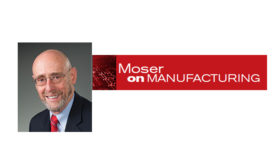Articles by Harry Moser
A deeper dive into Total Cost of Ownership (TCO): Part 1
Most companies make sourcing decisions based solely on price
December 1, 2016
Manufacturing Matters Most for Your Company, Too
Chasing cheap wages may be killing your bottom line.
June 3, 2016
Never miss the latest news and trends driving the manufacturing industry
Stay in the know on the latest assembly trends.
JOIN TODAY!Copyright ©2025. All Rights Reserved BNP Media.
Design, CMS, Hosting & Web Development :: ePublishing
